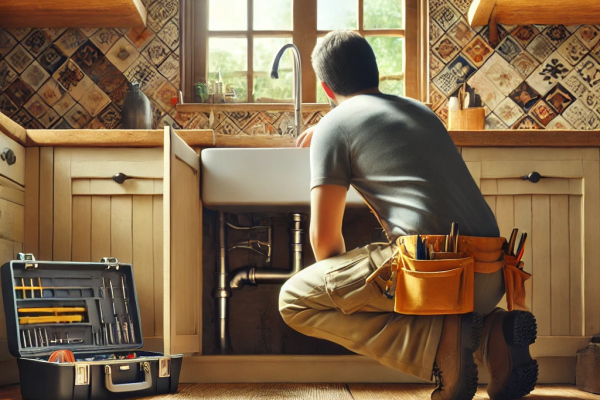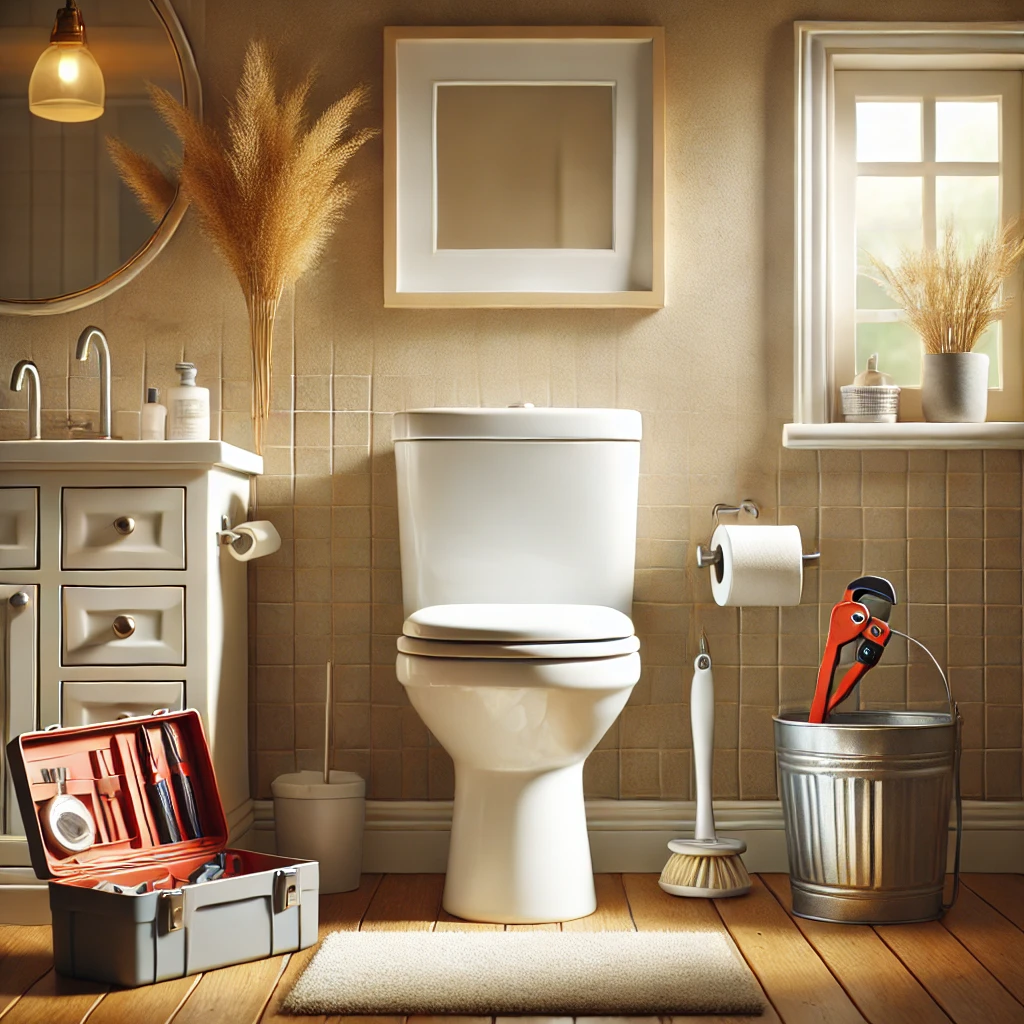
From Austin to Amarillo: Should You Fix Your Plumbing Yourself or Call a Pro?
Introduction
When something starts leaking in your home—be it a persistent faucet in the bathroom or a serious malfunction in the sewage system—you inevitably face the question: “Can I handle this myself, or should I just call a plumber right away?” Tackling a repair on your own can save you money and the time you’d spend waiting for a specialist. But what if you end up with an even bigger—and more expensive—problem?
Across Texas—from the capital city of Austin to the wide-open spaces of Amarillo—people love to do things themselves. It’s part of the local culture, where a can-do spirit and a knack for hands-on work are valued just as highly as the traditional laid-back lifestyle under the hot sun. However, the right decision depends on many factors: your skill set, your knowledge, and even local regulations. Let’s figure out when DIY is justified and when you really do need a professional.
Knowledge and Skills: Assessing Your Own Level
Repairing plumbing yourself seems tempting: in the internet age, finding instructions or video tutorials is easy. But even the most detailed guide cannot replace the thousands of hours of practice that a professional plumber has under their belt.
Pros:
- Lower costs: You’ll save on the plumber’s service fee.
- Skill-building: Each DIY repair enhances your expertise and boosts your confidence.
Cons:
- Risk of errors: Overlooking a single important detail can result in a significant leak.
- Lack of expertise: Sometimes problems run deeper in your pipes and call for professional diagnostics.
When to Call in an Expert:
- If you can’t pinpoint the root cause of the malfunction even after watching multiple tutorials.
- If the repair requires specialized, expensive tools you don’t have.
- If the issue recurs repeatedly. For example, you replaced a faucet washer, but the leak came back the following week.
In Texas, where summer heat and fluctuating humidity levels can affect the condition of plumbing systems, a faulty DIY repair can have serious consequences. A minor leak in drought-prone areas can be costly, both financially and in terms of resource conservation.
Time: Do You Have Enough of It?
When planning a DIY repair, remember that skill is only half the battle. The other half is the free time you can devote to the project.
Pros:
- Flexible schedule: You can work on the repair whenever it’s convenient for you, without having to align with a plumber’s timetable.
- Savings on emergency calls: Professional services may charge extra for off-hours fixes.
Cons:
- Drawn-out repairs: Without experience, even simple tasks can take much longer than expected.
- Limited availability: If you live in a big city like Houston and work full-time, finding the necessary time might be challenging.
A Firsthand Texas Story:
Once, I helped an elderly couple in Dallas who had a leaky toilet. They wanted to save money and tried to fix it themselves. But because they lacked the proper tools and know-how, a two-hour job stretched into two days. While they learned how to replace the fill valve, they endured frayed nerves and significant water waste during the process.
Tools: What You’ll Need and How Much It Costs
A screwdriver, a wrench, and a tape measure form only the most basic toolkit. Professionals usually show up with a whole arsenal of gear—from pipe wrenches of various sizes to specialized drain snakes.
Pros of a DIY Approach:
- “Long-term” tool investment: Investing in good-quality tools can pay off for future repairs.
- Quality control: You personally choose which materials and parts to use.
Cons:
- High initial cost: Some tools—especially specialty equipment like power drain augers—can be expensive.
- Limited local availability: Certain specialized items might be hard to find in regular stores in your area.
In the eastern parts of Texas, where humidity is high and the ground can be prone to shifting, repairing water supply lines might require additional devices to reinforce pipes or divert excess moisture. If you’re buying pricey tools just for a single project, it might be more practical to hire a professional.
Budget: When Is DIY Cheaper and When Is It Better to Hire?
One of the biggest motivations for tackling plumbing repairs yourself is saving money. Yet it’s important to factor in potential risks.
Pros:
- Reduced expenses: For minor tasks like replacing a washer, doing it yourself can indeed be significantly cheaper.
- No service call fees: Many plumbing companies charge a considerable amount just to show up and diagnose the problem.
Cons:
- Possible fines and penalties: If you do something that requires approval from local authorities and skip that step, you could face penalties.
- Repeat repairs: Mistakes may lead to further damage—and additional costs.
From Experience:
A client in Houston once tried to replace a pipe without the correct fittings. The entire setup leaked and damaged the flooring and walls. Their insurance company only covered part of the expenses, citing “gross installation error.” Ultimately, the attempt to save a few dollars ended up costing them much more.
Permits: Stay on the Right Side of the Law
Many states have varying requirements for plumbing work in residential properties, and Texas is no exception. Typically, replacing everyday parts—like a trap or faucet—doesn’t require any special permit. But for major changes, permits and inspections are often necessary.
Why This Matters:
- Safety: Poor repairs can damage your home and potentially neighboring units.
- Insurance claims: Insurers may refuse coverage if work was done illegally.
- Resale complications: Unpermitted modifications can create headaches when selling your home.
Cities like El Paso have stricter codes compared to other Texas counties. Skipping professional help might not be worth the hefty fines or legal battles.
Practical DIY Tips and Tricks
If you’re determined to handle the fix yourself, here are some tips:
- Always turn off the water before starting. It’s astonishing how often eager DIY-ers forget this crucial step.
- Double-check part compatibility. Texas homes feature a variety of pipe types—steel, copper, and plastic—so ensure your parts match.
- Don’t buy the cheapest tools. A quality pipe wrench can last decades, whereas a cheap one may fail at the worst moment.
- Keep a professional’s contact info handy. If things spiral out of control, you’ll want to call a pro quickly.
- Review local regulations. Check city building codes. Replacing a faucet washer is simple, but moving a water line may require a permit.
When Professional Help Is Indispensable
Even the most confident DIY enthusiast will encounter situations where professional expertise is a must:
- Major sewer line issues: Deep clogs often need specialized equipment.
- Gas water heaters: Mistakes with gas lines can lead to leaks and fires.
- Major overhauls: Remodeling a bathroom or relocating plumbing requires skill and permits.
A San Antonio Case:
A homeowner tried moving a gas water heater to another part of the basement, resulting in a gas leak. Luckily, it was detected and fixed in time to prevent disaster. The lesson? Some tasks are better left to licensed professionals.
Conclusion: Finding a Balance Between Saving Money and Staying Safe
Texans are known for their grit, love of independence, and a willingness to roll up their sleeves. However, when it comes to plumbing, an overly confident DIY approach can backfire.
Key Takeaways:
- Evaluate your skills and time honestly.
- Factor in the costs of tools and materials.
- Don’t overlook local laws and permit requirements.
- Consider Texas’ climate and specific plumbing challenges.
If in doubt, call a pro. A licensed plumber might not be cheap, but they save you money and stress in the long run. For minor issues, having the right tools and knowledge can empower you to handle simple fixes confidently. The key is knowing where to draw the line between “tightening a faucet” and “redoing half the plumbing system.”
Final Tip:
Whether you’re in Amarillo, Dallas, or Houston, may your water supply always run smoothly. And if something goes awry, choose the solution that best fits your skills, home, and family.






